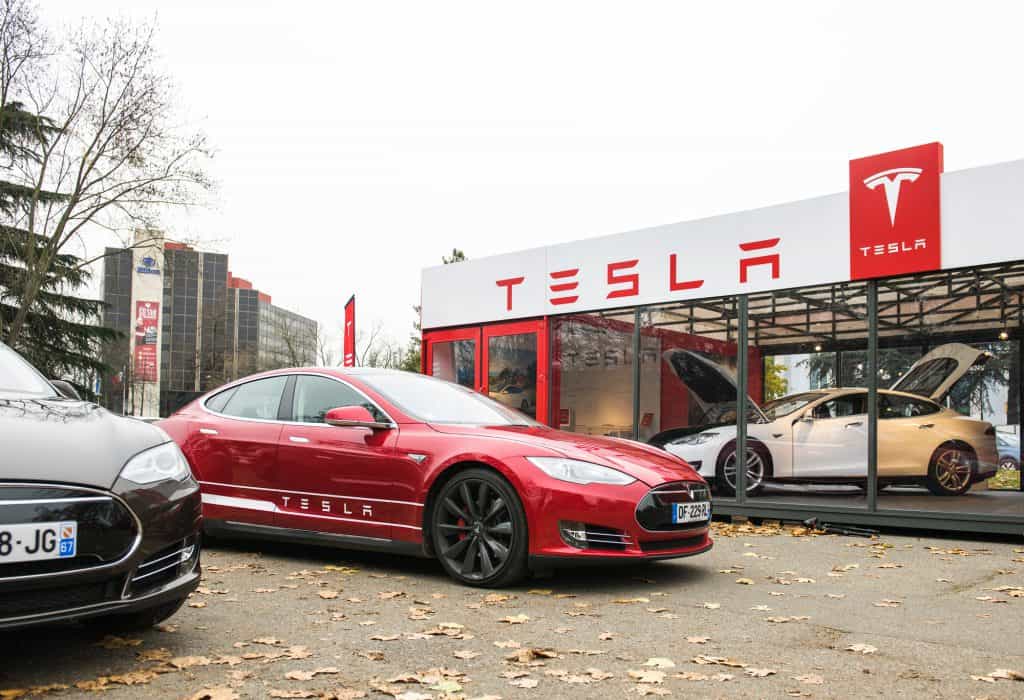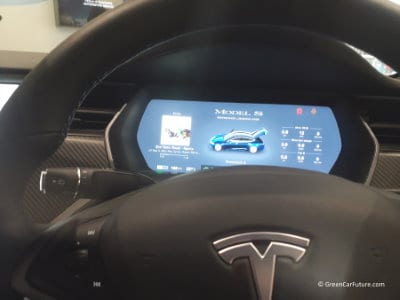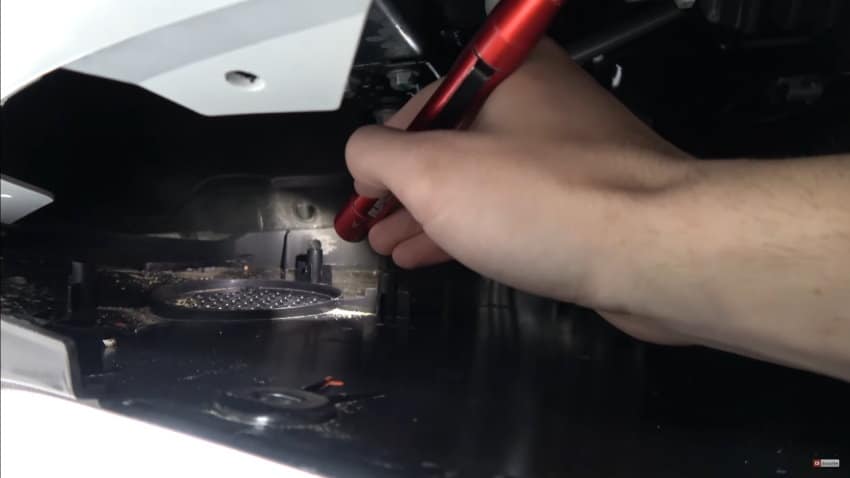It’s no secret that Teslas are far from cheap. The cheapest Tesla is the Model 3, which starts at $39,990 before factoring in government rebates, and $34,190 when you factor in all possible savings (including the special California Clean Fuel Reward of $1,500). That’s hardly in the “budget” range. You could buy a 2021 Chevy Spark LS for just $15,695, for instance.
OK, so the Chevy Spark doesn’t have anywhere the gravitas or luxury as a Tesla, and you certainly get a lot more for your $34,000 in terms of capability, but then the question remains, how much income do you need to make each year to really afford a Tesla? This is the central question of today’s blog.
What Does it Mean to “Afford” a Car?

First, let’s explore the question in a little more detail about what it means to “afford” a car. It’s not just about whether or not the initial sticker price is affordable to you. There are many other expenses to consider. Edmunds is well-known for their “True Cost to Own” (TCO) data that they generate. Edmunds data looks at a number of costs over 5 years to work out exactly how much any car will require. They look at:
- Applicable tax credits
- Insurance
- Maintenance
- Repairs (defined as likely unexpected repair costs that fall outside of regular maintenance)
- Taxes & Fees
- Financing
- Depreciation
- Fuel
The cost estimates are based on a car covering 15,000 miles a year, which is quite close to the national average in the US of about 13,500 miles. Therefore, to “afford” a Tesla Model S, you not only have to be able to pay for the car itself either through monthly payments or an upfront payment, but then the running costs. Edmunds gives the 5-year running costs of a Tesla Model S at a staggering $90,603. We’ll get into that in more detail in the next section.
Edmund’s list of costs is a fair one. To really afford any car, including a Tesla, we need to take most or all of these factors into account. Furthermore, when it comes to affording a Tesla specifically, we have to also consider the different models and trims of the entire range. Right now, the Tesla Motors range includes the Model S, Model 3, Model X and Model Y. The latest range also includes multiple trim levels:
- Tesla Model S includes 2 trim levels – Long Range, and Plaid
- Tesla Model 3 includes 3 trim levels – Standard Range Plus, Long Range, and Performance
- Tesla Model X includes 2 trim levels – Long Range, and Plaid
- Tesla Model Y includes 2 trim levels – Long Range, and Performance
Trim levels have a marked effect on cost, and this is also before additional Tesla features like the Full Self-Driving Capability, which adds $10,000 to the cost.
True Cost of a Tesla: A Case Study – Tesla Model S

Now let’s start looking at some examples of true cost to own. We’ll start with the Model S, which while being the highest-end model in the range, covers all the bases and gives us an upper range of costs. If you could afford the Model S costs, you could probably also afford any other Tesla in the range.
As we mentioned further above, Edmunds’ figures on the Model S cover a range of figures giving a real 5-year cost to own for the 2020 Tesla Model S. Here’s how they break it down for the 2020 Model S Long Range 4dr Sedan AWD:
| (All in USD) | Year 1 | Year 2 | Year 3 | Year 4 | Year 5 | Total |
| Tax Credit | 0 | 0 | 0 | 0 | 0 | 0 |
| Insurance | 1,970 | 2,039 | 2,110 | 2,184 | 2,261 | 10,564 |
| Maintenance | 591 | 779 | 611 | 1,928 | 2,486 | 6,395 |
| Repairs | 0 | 0 | 0 | 934 | 1,425 | 2,359 |
| Taxes & Fees | 5,168 | 61 | 61 | 61 | 61 | 5,412 |
| Financing | 5,371 | 4,338 | 3,226 | 2,2028 | 736 | 15,699 |
| Depreciation | 11,561 | 10,110 | 8,261 | 9,262 | 8,093 | 47,287 |
| Fuel | 544 | 560 | 577 | 594 | 612 | 2,887 |
| True Cost to Own | 25,205 | 17,887 | 14,846 | 16,991 | 15,674 | 90,603 |
So you’ll be looking at a five figure cost (including depreciation) each and every year that you own a 2020 Model S.
Some of the above costs we will consider in more depth in our next section as we try to factor more Tesla models into the mix.
Affording a Tesla: The Main Costs
1. Financing Vs. Buying Outright
The first consideration here is how you would be paying for your Tesla car. If you plan to buy it outright, then you’d need an income that allowed you to save enough to cover at least the following base costs, which we’ll give without factoring in any rebates or incentives:
- Tesla Model 3 – $39,990
- Tesla Model S – $82,990
- Tesla Model X – $99,990
- Tesla Model Y – $53,990
If you’ve held a high-income job bringing in $75,000 a year or more for several years, you could well have enough saved to make such a purchase, but you might be unwilling to do so. You would likely still consider financing. So, what finance options are open for Teslas?
First, Tesla offers their models on lease. Let’s use the Model X as an example here. Tesla suggests a down payment of $7,500 on the Model X lease, and with an annual mileage limit of 12,000 (about average in the US) and over a period of 36 months, the total cost to lease would be $1,285. That would make total leasing costs over 3 years at around $53,760. The lease payments would come to $15,420 per year, so your annual income would have to comfortably cover that.
Besides leasing, Tesla also offers finance with typical APR ratings at less than 3 percent. We will use the “affordable” Tesla Model 3 for this example. With a downpayment of $4,500 and an APR of 2.49% over a period of 48 months, the Tesla Model 3 would cost $804 per month with no incentives, and just $683 a month when you factor in those incentives and savings (including savings on gasoline).
2. Tesla Maintenance

While Teslas are becoming increasingly popular, and apparently now the Tesla Model 3 is about the 16th best-selling car in the world, they are still relatively few and far between when you compare them to the likes of a Toyota Corolla or a Honda Civic. Therefore, estimating real maintenance costs over a large group can be a bit tricky.
Fortunately, however, many Tesla fans love to report on the costs and condition of their beloved Tesla EV once they reach certain milestones either in years of ownership or miles reached. Insideevs.com did a feature where they discussed YouTuber Andy Slye and his video on the true cost of a Tesla Model 3 after 40,000 miles. In this video, he covered maintenance, so how much, in his experience, has the Tesla Model 3 cost in maintenance?
After incentives his car cost him $51,922 in up-front costs. In the first 40,000 miles of maintenance, however, he’s spent the very pleasing sum of zero dollars and zero cents — nada! He mentions 3 minor repairs that were needed to the car, all of which were covered under the warranty, so no cost. The basic Tesla Warranty in 2021 covers 4 years or 50,000 miles. Slye’s car hasn’t even had a change of tires yet, but he has covered those 40,000 miles in less than 2 years, so it remains to be seen on that front.
3. Charging
For charging, we’ll continue to use Andy Slye’s Tesla Model 3 as an example since it’s the best-selling model and his figures are a good indication of total costs. In the 40,000 miles he covered in his Tesla Model 3, Slye expended an impressive 9,622 kWh of juice from the battery. The vast majority of this — 9,428 kWh — came from home charging, with the remainder being charged from Tesla Supercharger stations.
That minority on Supercharging cost just $54 in his home state of Kentucky, and the home charging costs come to $0.07 per kWh, which comes to about $660. Even when you factor in loss of power from wall-to-wheel efficiency problems, battery drain when idling and so on, Slye estimates his total charging costs at home of $767 over that 40,000-mile period.
Covering 40,000 miles in a 30-mpg sedan car, assuming gas at around $2.50 a gallon, would come to $3,333 in the same period, so you can see you don’t need a high income to afford to run a Tesla when it comes to charging. If anything, the Tesla (and other EVs) are built to help people make running their cars more cost-effective.
4. Insurance
Insurance can be very costly on Tesla cars. Further below we point to the very high average cost of insuring a Model Y (more than $2800). Slye’s Model 3 is cheaper, however, costing him $2,000 annually along with his wife’s car in a joint policy. It’s still rather high compared to the national average of about $1,500 a year for full coverage, and Slye’s policy includes a $500 deductible.
When it comes to this cost for the Tesla, however, you get the offsetting factor of the fueling costs. The fact that Slye has already saved $2,500 on fuel over 17 months clearly helps to offset the cost of that insurance greatly.
5. Depreciation
On caredge.com, they list the general depreciation as an average on Tesla models, and the numbers make for difficult reading if you were planning on selling your Tesla within 4-5 years. According to the figures on caredge.com, a Tesla will depreciate about 10-12 percent annually, but overall very steeply in the first three years. A 2020 model bought in 2021 is only worth 90 percent of its MSRP. That drops to 78 percent for 2019 models, and to 63 percent for 2018 models. If you’re thinking of buying a used Tesla, then 2018 is currently the sweet spot for depreciation, as it levels out and slows greatly in the following years.
Conclusion: Affording a Tesla: Income Level

When it comes to deciding on what income level you need, a good rule of thumb to assess affordability is the 20:4:10 rule. These three numbers indicate amounts of money and time to purchase a Tesla on finance, which is what many buyers are likely to look at as an option.
- 20 — The amount to lay down as a deposit, and mostly to prevent car finance from “going underwater” due to vehicle depreciation which is like negative equity on your house, when the amount you owe exceeds that of the car’s worth.
- 4 — The number of years that are recommended to repay the finance. A period of 4 years is thought of as the happy medium because a shorter time adds more pressure to monthly payments but a longer period just means more wasted on interest.
- 10 — This refers to a proportion of your pre-tax income. The total monthly cost of the vehicle, including monthly finance payments and insurance costs, should not exceed 10 percent of your gross income.
If you can make the numbers for a Tesla fit into this model, then you are earning enough to afford the car. Below we’ve prepared an example:
A Tesla Model Y Long Range (basic trim) has a cash price of $55,990, which after incentives comes to $50,190, and then with a destination fee added comes to a final figure of $51,390. Tesla suggests a downpayment of $4,500, but to follow the above rule, we should offer a larger deposit of $10,278 — let’s just say $10,000 — to make that 20 percent.
Over a period of 48 months (4 years), with an APR of 2.9%, the loan payment would be $913 per month. The average annual insurance cost for the Tesla Model Y, according to moneygeek.com, is $2,878 per year, which means $240 a month. Together, then your finance and insurance costs come to $1,153 monthly.
So, if you can afford a $10,000 deposit, and you make an income of about $10,500-11,000 monthly, then you can afford the Tesla Model Y according to the 20:4:10 rule. Of course, some don’t agree with that rule because they say using a pre-tax income level is misguided, or that different people have different models of living costs, but as a concept it remains accepted by many as a good guide.
This would mean that you’d need an income of at least $120,000 a year to really be in the bracket of easily affording a Tesla Model Y. If you don’t have a mortgage, or children to pay for, and are not supporting elderly relatives, then that figure could likely come down.
The Model Y with a cost of between $50,000 and $60,000 is quite representative of Tesla’s range in terms of cost, so it’s a good model to use. Obviously, the Model 3 and future proposed cheaper models would have figures somewhat lower than this, but it gives you a good idea.
The truth is that there are many ways to get a Tesla from a dealership to your garage. Whether you lease, buy outright, finance on a loan, or purchase a used model, it’s fair to say that Tesla isn’t for the low-income bracket. Perhaps the arrival of the much-anticipated Tesla Model 2 will change all of that.